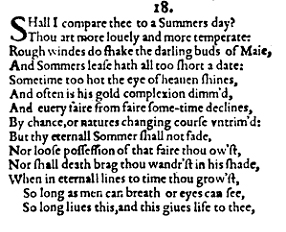

In 1380, Chaucer adopted part of the Canzoniere to form three stanzas of rhyme royal in Troilus and Criseyde, Book I. Dante, and the school of the dolce stil nuovo, or new sweet style, developed this placement of the female and proposed that the pursuit of love was a noble virtue. In addition, the troubadours who wrote love poems concerned with chivalry in Provençal (in the canso or canzone form) are likely to have had an influence, primarily because of the position of adoration in which they placed the female figure. Petrarch inherited aspects of artifice and rhetorical skill from Sicilian courtly poetry, including that of the inventor of the sonnet form, Giacomo da Lentini. Petrarch uses Ovid's Metamorphoses to convey themes of instability, and also sources Virgil's Aeneid. Even glory, however, cannot guarantee real eternity, because in Christianity, only faith in Jesus Christ can guarantee it. The love theme itself should be considered as the nucleus around which Petrarch develops his deep psychological analysis: thanks to his poems inspired by Laura ( laurus is the symbol for poetry) the poet aspires to reach glory, which in turn can fight the all-destroying power of time. Other themes are important: religion, poetry, politics, time, glory. In any case, it would be improper to see Canzoniere as uniquely inspired by love for Laura. Some other themes are desire, isolation, unrequited love, and vanity of youth. The changing mind of man and the passing of time are also central themes, as is the consideration of the art of poetic creation itself.

This leads on to the essential paradox of Petrarchan love, where love is desired yet painful: fluctuation between states is a means of expressing this instability. Antithesis are also key to the sequence and in one sense represent Petrarch's search for balance these would later be exploited by Petrarchists in Europe but represent only one aspect of the Rimes. The most evident purpose of the Canzoniere is to praise Laura, yet questions concerning the virtue of love in relation to the Christian religion and desire are always present. The poems however are so sparing of facts that Petrarch had to write his friend Giacomo Colonna to assert her existence against a charge that she was a fictional creation. The central theme in the Canzoniere is Petrarch's courtly love for Laura, with whom he reportedly fell in love at first sight on 6 April 1327 and who died on that date in 1348. His work would go on to become what Spiller calls 'the single greatest influence on the love poetry of Renaissance Europe until well into the seventeenth century'. The two sections of the sequence which are divided by Laura's death have traditionally been labelled 'In vita' (In life') and 'In morte' (In death) respectively, though Petrarch made no such distinction. The transcription and ordering of the sequence itself went on until 1374, the year of the poet's death. Petrarch's meticulous dating of his manuscripts has allowed scholars to deduce that the poems were written over a period of forty years, with the earliest dating from shortly after 1327, and the latest around 1368. Though disputed, the inscription in his copy of Virgil records this information. Its central theme is the poet's love for Laura, a woman Petrarch allegedly met on April 6, 1327, in the Church of Sainte Claire in Avignon. Of its 366 poems, the vast majority are in sonnet form (317), though the sequence contains a number of canzoni (29), sestine (9), madrigals (4), and ballate (7). Though the majority of Petrarch's output was in Latin, the Canzoniere was written in the vernacular, a language of trade, despite Petrarch's view that Italian was less adequate for expression.

Il Canzoniere ( Italian pronunciation: English: Song Book), also known as the Rime Sparse (English: Scattered Rhymes), but originally titled Rerum vulgarium fragmenta (English: Fragments of common things, that is Fragments composed in vernacular), is a collection of poems by the Italian humanist, poet, and writer Petrarch. After printing, early versions of the Canzoniere were illuminated with pictures.


 0 kommentar(er)
0 kommentar(er)
